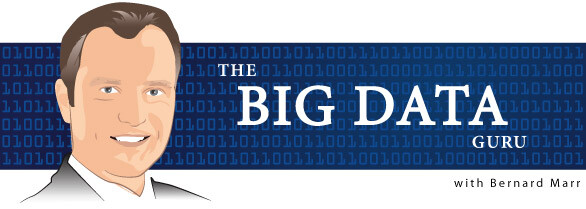
Employees are a both a business’s greatest asset and its greatest expense. So hitting on the right formula for selecting them, and keeping them in place, is absolutely essential. One company offering unique solutions to help others tackle this challenge is Evolv, and in this post I will give a brief overview of what they do, and why it’s an important – but maybe also controversial – example of big data analysis driving business growth.

Employees are a both a business’s greatest asset and its greatest expense. So hitting on the right formula for selecting them, and keeping them in place, is absolutely essential. One company offering unique solutions to help others tackle this challenge is Evolv, and in this post I will give a brief overview of what they do, and why it’s an important – but maybe also controversial – example of big data analysis driving business growth.
Evolv is a software tool which helps assess and understand employees and candidates by crunching half a billion data points on everything from gas prices, unemployment rates and social media use.
Clients such as Xerox use it to predict, for example, how long an employee is likely to stay in his or her job, and remarkable insights gleaned include the fact that in some careers, such as call centre work, employees with criminal records perform better than those without.
Its prowess has made Evolv into a huge success, with sales growing by 150% from 2012 to 2013 and the software being put to use by 20 of the Fortune 100 companies.
The “data points” are measurements taken from employees working across 18 industries in 13 different countries, providing information on everything from how long they take to travel to work, to how often they speak to their managers. Data collection methods include the controversial “smart badges” that monitor employee movements and track which employees interact with each other.
Evolv has certainly caused positive change in companies using it – Xerox reduced call centre turnover by 20% by applying analytics to prospective candidates – finding among other things that creative people were more likely to remain with the company for the 6 months necessary to recoup the $6,000 cost of their training than inquisitive people.
So far data gathering and analysis has focused mainly on customer-facing members of staff, who in larger organizations will tend to be those with less responsibility and decision-making power. Could even greater benefits be taken by applying the same principles to the movers and shakers in the boardroom, who hold the keys to wider-reaching business change? Certainly some companies are starting to think that way
The director of research and strategy at one firm that uses the software – David Lathrop of Steelcase – told the Financial Times this year that improving the performance of top executives has a “disproportionate effect on the company”. Although he did not disclose precise details of methods or results, much research is being carried out in the name of finding exactly what it is that makes high-fliers tick. This will inevitably find its way into analytical projects at big companies which spend millions hiring executives.
Crunching employee data at this level plainly has the opportunity to bring huge benefits, but it could also prove disastrous if a company gets it wrong.
Failing to take proper consideration of individuals’ rights to privacy in some jurisdictions (eg Europe) can lead to severe legal penalties. In my opinion, any company thinking about carrying out data-gathering and analysis for these purposes needs to take great care.
In workplaces where morale is low or relationships between workers and managers are not good, it could very easily be seen as a case of taking snooping too far.
Interestingly, Evolv’s privacy policy makes it clear that information on applicants is provided to them by their clients, including names, work history and contact details. How many people know that simply by applying for a job with one of these clients, their personal data will be made available for analysis? It appears that Evolv absolves itself of responsibility here by declaring itself a “mere data processor” – putting the onus on the client businesses to gain permission to distribute their applicants’ and employees’ data.
It is vitally important that staff are made aware of precisely what data is being gathered from them, and what it is being used for. Everyone (and certainly those running the operation) needs to be aware that the purpose is to increase overall company efficiency, rather than assess or monitor individual members of staff.
With more than half of human resources departments reporting an increase in data analytics since 2010, according to a report by the Economist Intelligence Unit, it’s obvious that like it or not, it’s here to stay. Companies that use it well, with respect for their employees’ privacy and an understanding of the vital principle mentioned above, are likely to prosper. Those who don’t – be warned!
—–
For more, please check out my other posts in The Big Data Guru column and feel free to connect with me via Twitter, LinkedIn, Facebook, Slideshare and The Advanced Performance Institute.